Three words
often appear in Icelandic geographical names:
hver = hot spring, like in Hveragerdi and Deildartunguhver
laug = [outdoor] bath, like in Laugarvatn and Laugar
reyk = smoke, like in Reykjavík and Reykjahlíð
and all three names
indicate one or more hot springs
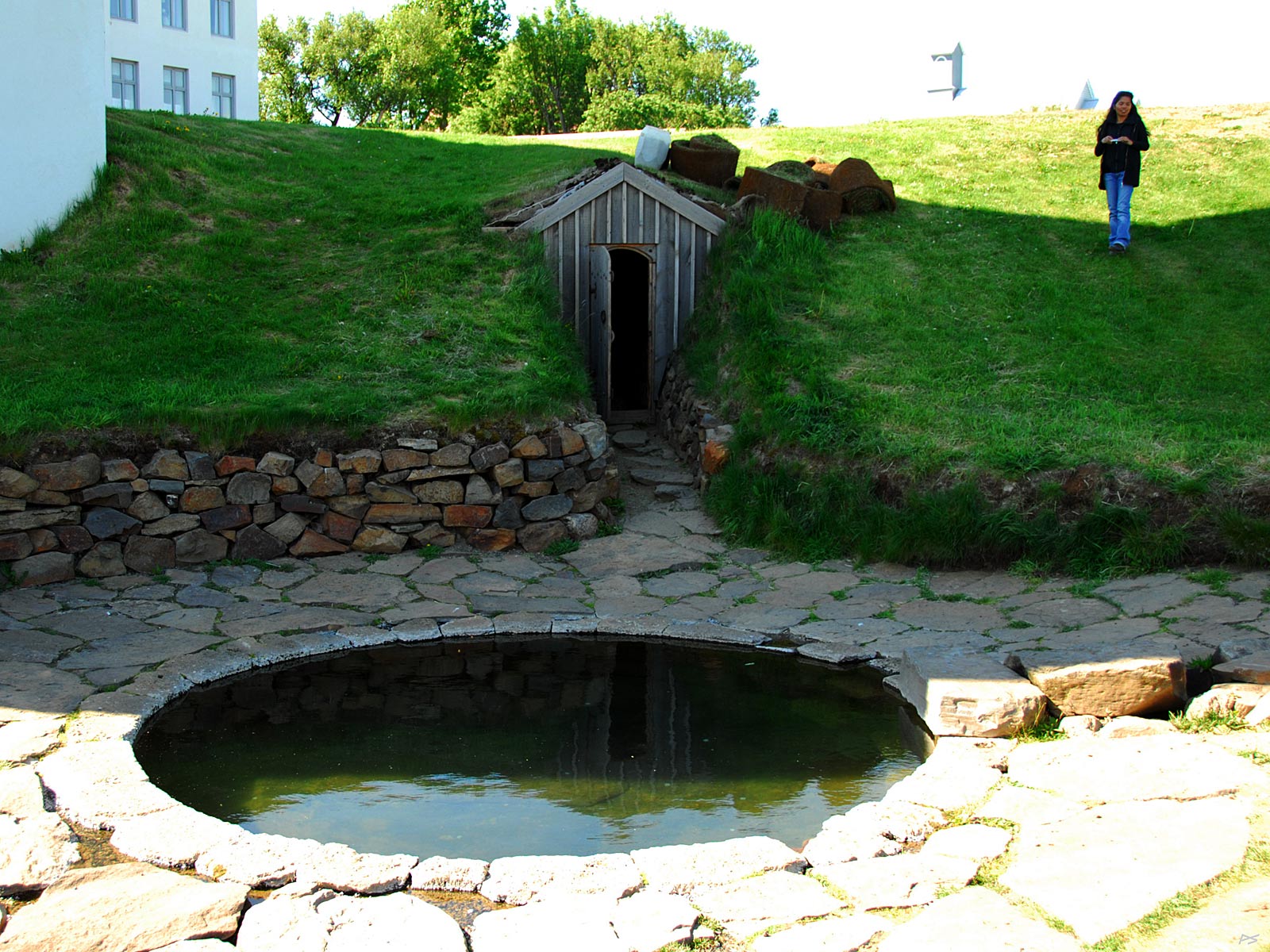
(2010-06-08)
Snorrilaug, the bath of the writer, historian and politician Snorri Sturluson (1178–1241) at his farm Reykholt (northeast of Borgarnes), is still kept warm with water from the depth. The lining stones are believed to be the original ones. Behind is the entrance to a passage where Snorri was murdered; that construction is not the original one.
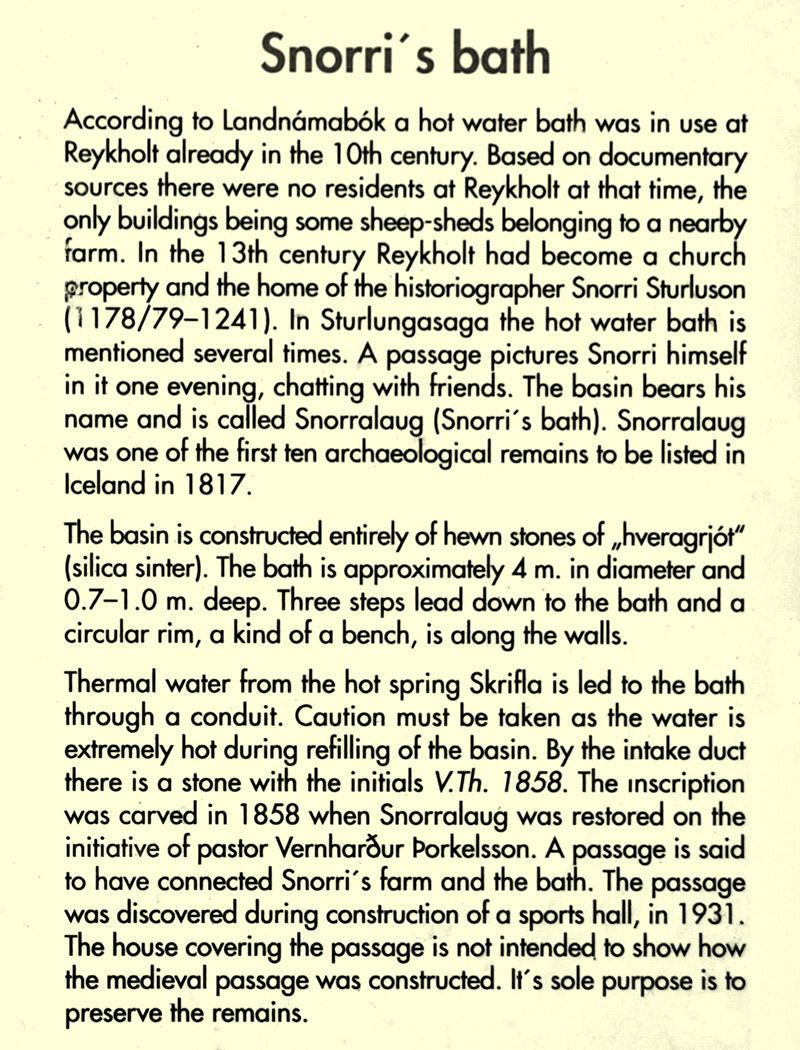
From a poster
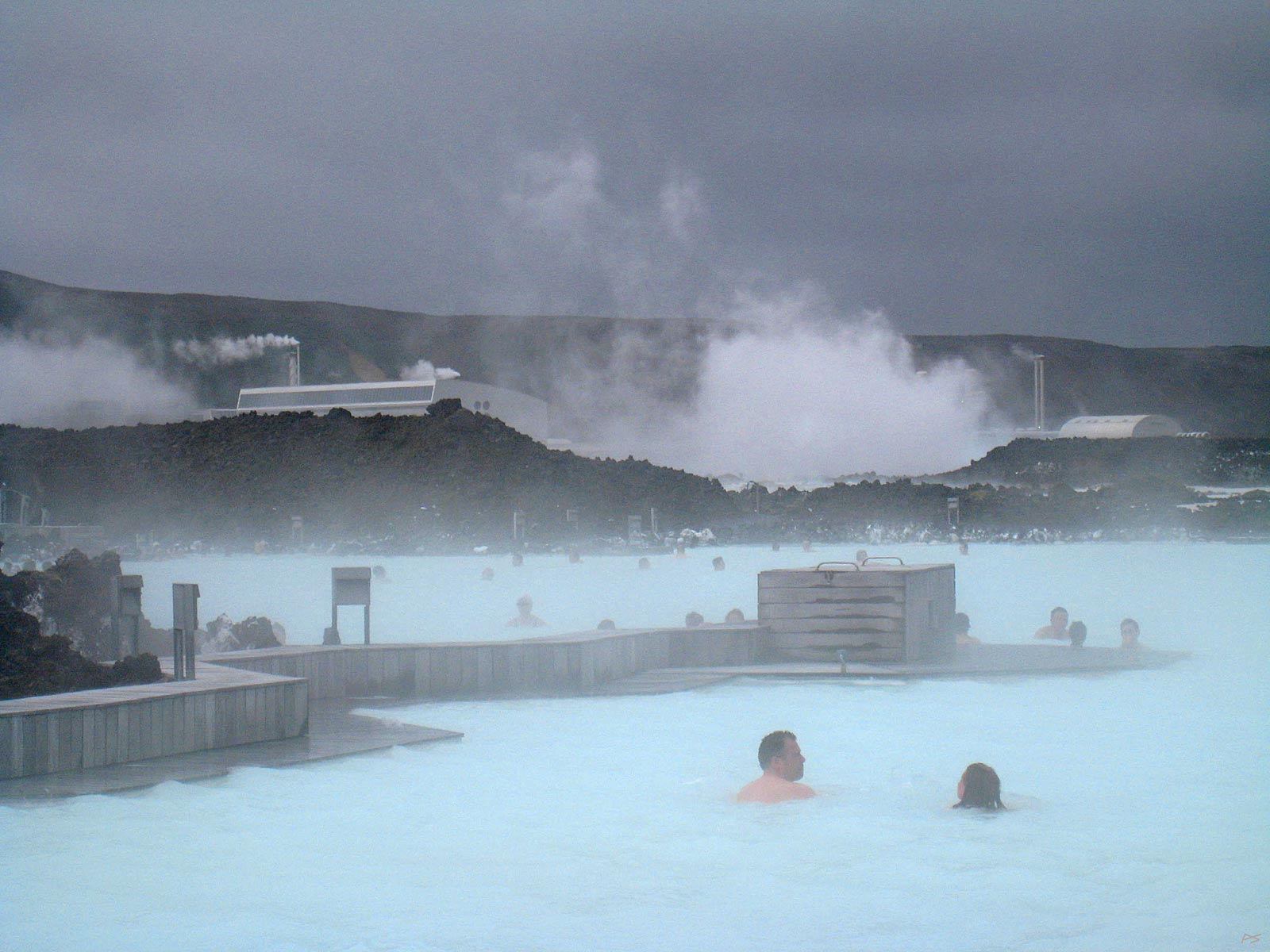
(2010-05-31)
The Blue Lagoon ('Bláa Lónið'), one of those places tourist feel they have to visit. And since it lies near Keflavík, and Reykjavík for that matter, it should usually be possible. This was on a windy and rainy day. Maybe you'll prefer to go there in far worse weather, like a blizzard or just a heavy snowfall? The hot water comes from the nearby geothermal power station Svartsengi.
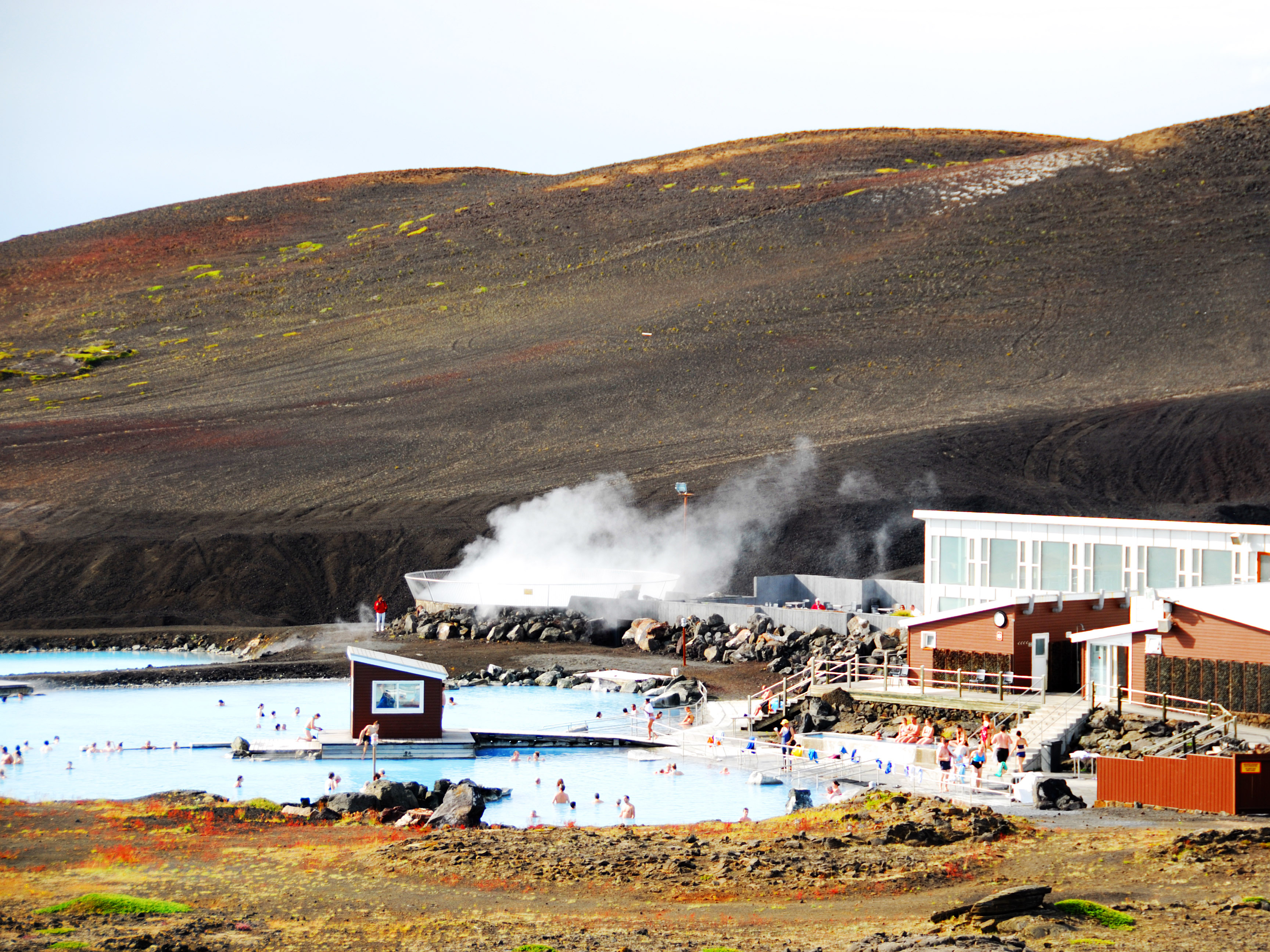
(2013-08-07)
Jarðböðin (literary 'the Earth-baths') on the west slope of Námafjall, a couple of kilometres east of Mývatn, "is like the Blue Lagoon, only better", according to what we were told locally. Well, it's smaller, and there seems to be nothing wrong with it, and it's newer, it opened in 2004, using hot water from the Bjarnarflag geothermal power station on the other side of the Ring Road. Bjarnarflag was the first geothermal power plant, starting 1967 it delivers only 3 MW (megawatts). There are plans to build a new 90 MW geothermal power plant in the vicinity.
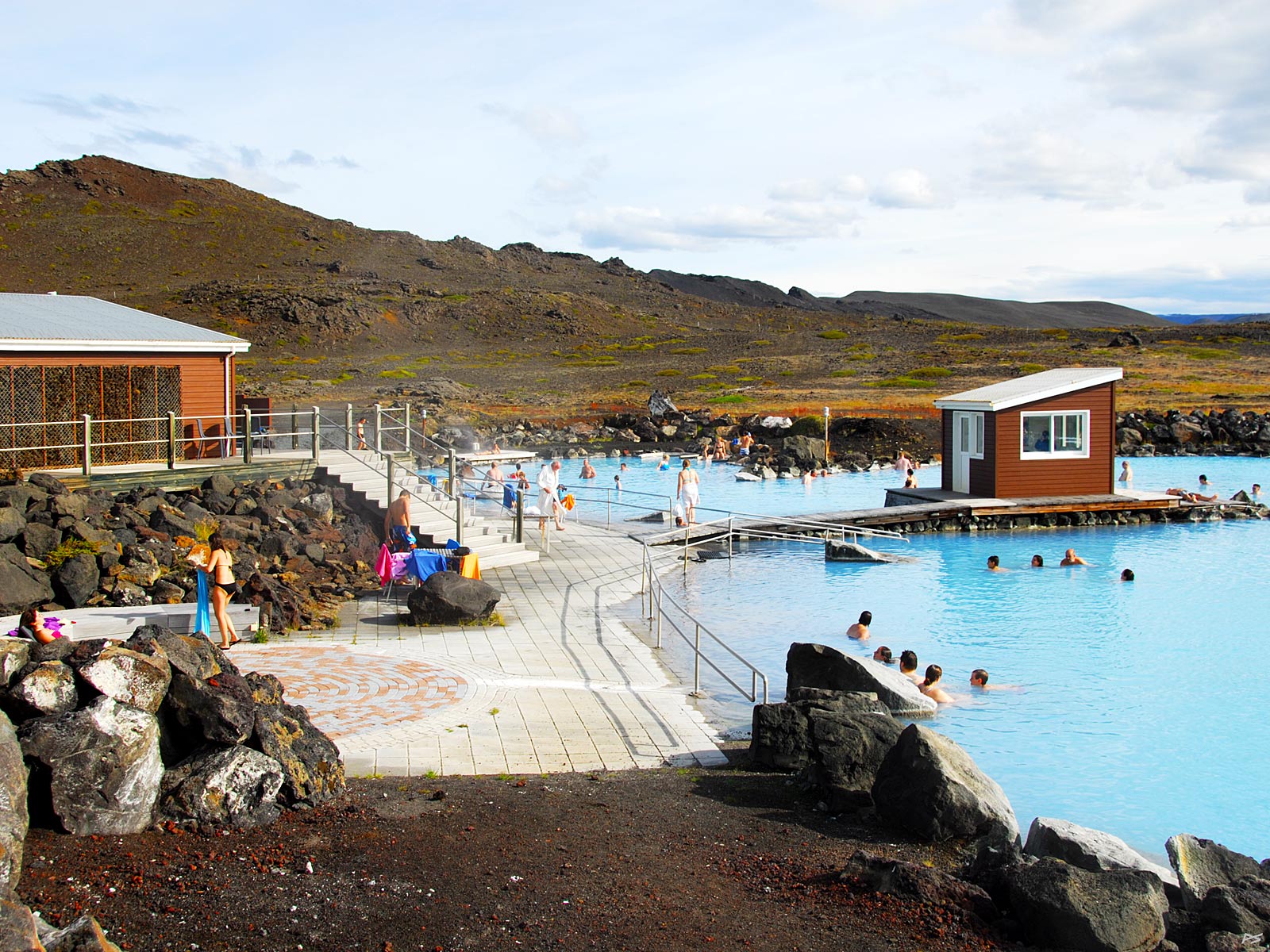
(2010-06-07)
Jarðböðin at Mývatn seen from the other side. It's summer, but this hasn't significantly changed the colours of the landscape .

From poster

(2013-08-06
There is a rough highland route (35) across Kjölur, between Langjökull and Hofsjökull, starting at Gullfoss and hitting the main road halfway between Blönduós and Varmahlið. The rivers are bridged now, which makes new visitors feel a lot better. Halfway, at Kjölur, you should make a short detour on F735 to the geothermal site Hveravellir (= hot-spring-fields). Here are two huts and a café, and this rough hot bath with a shelter for changing.
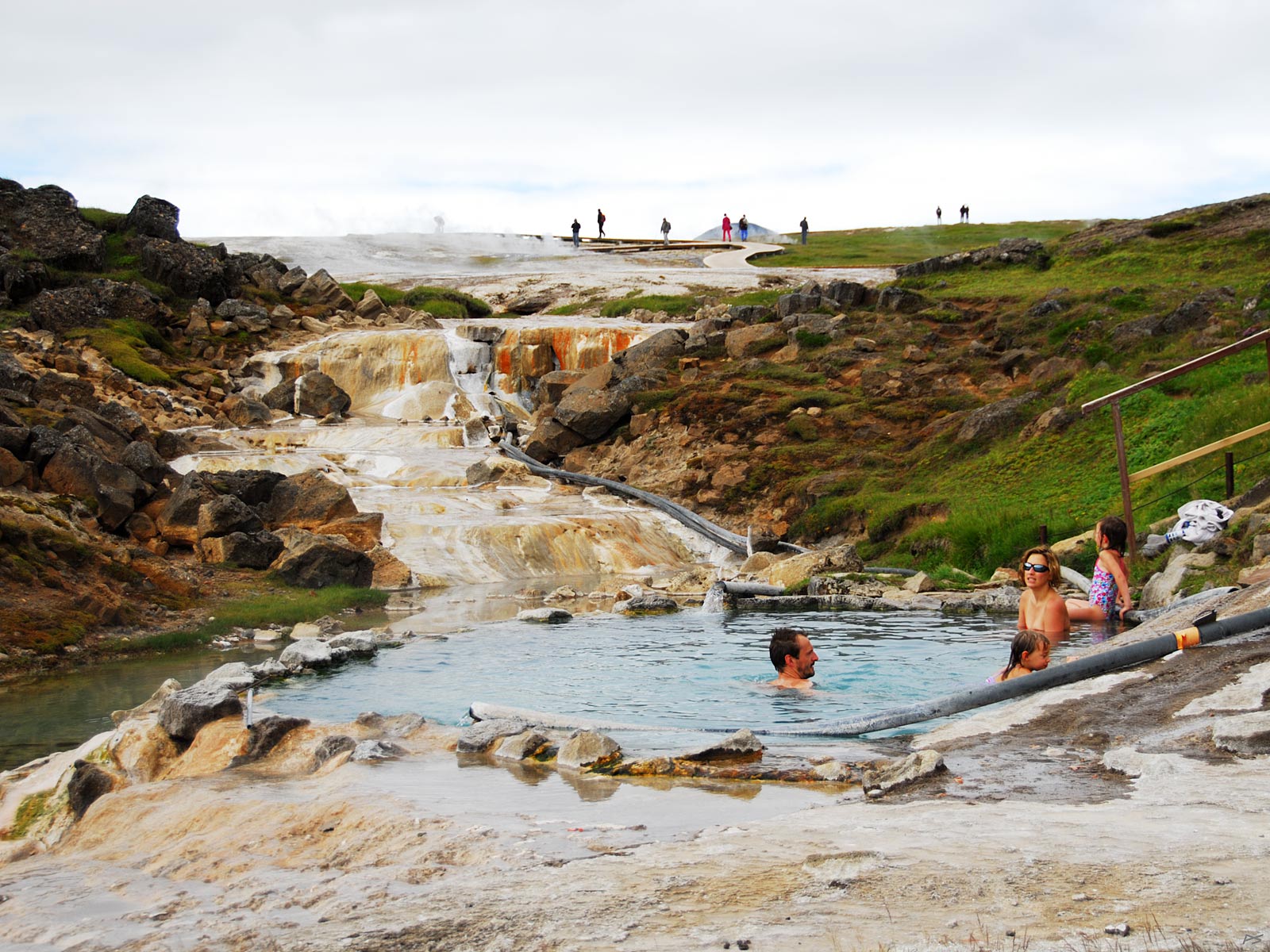
(2013-08-06)
The Hveravellir bath seen from the other side. The hot springs and fumaroles are on the top of the slope.
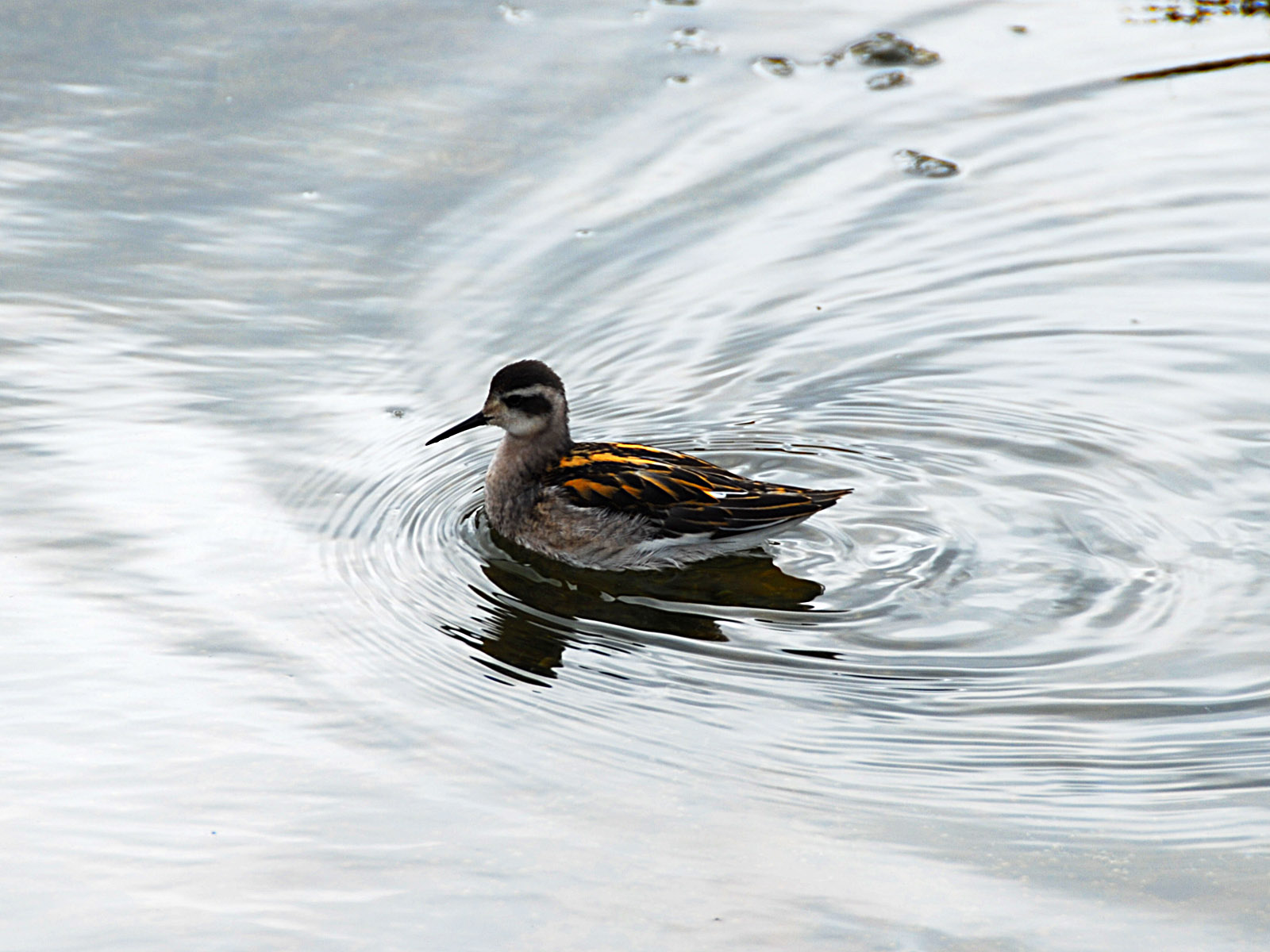
(2013-08-06)
In the small, shallow and lukewarm creek downstream from the bath, some redneck phalarope were feeding. Now in August they are loosing their mating plumage and the red neck is gone. The winters are usually spent in the tropics. There is a picture of one in mating plumage swimming in Mývatn.

(2013-0806)
Above the bath several hot springs and fumaroles are found. It is advisable to stay on the boardwalks to protect both yourself and the sensitive geothermal area.
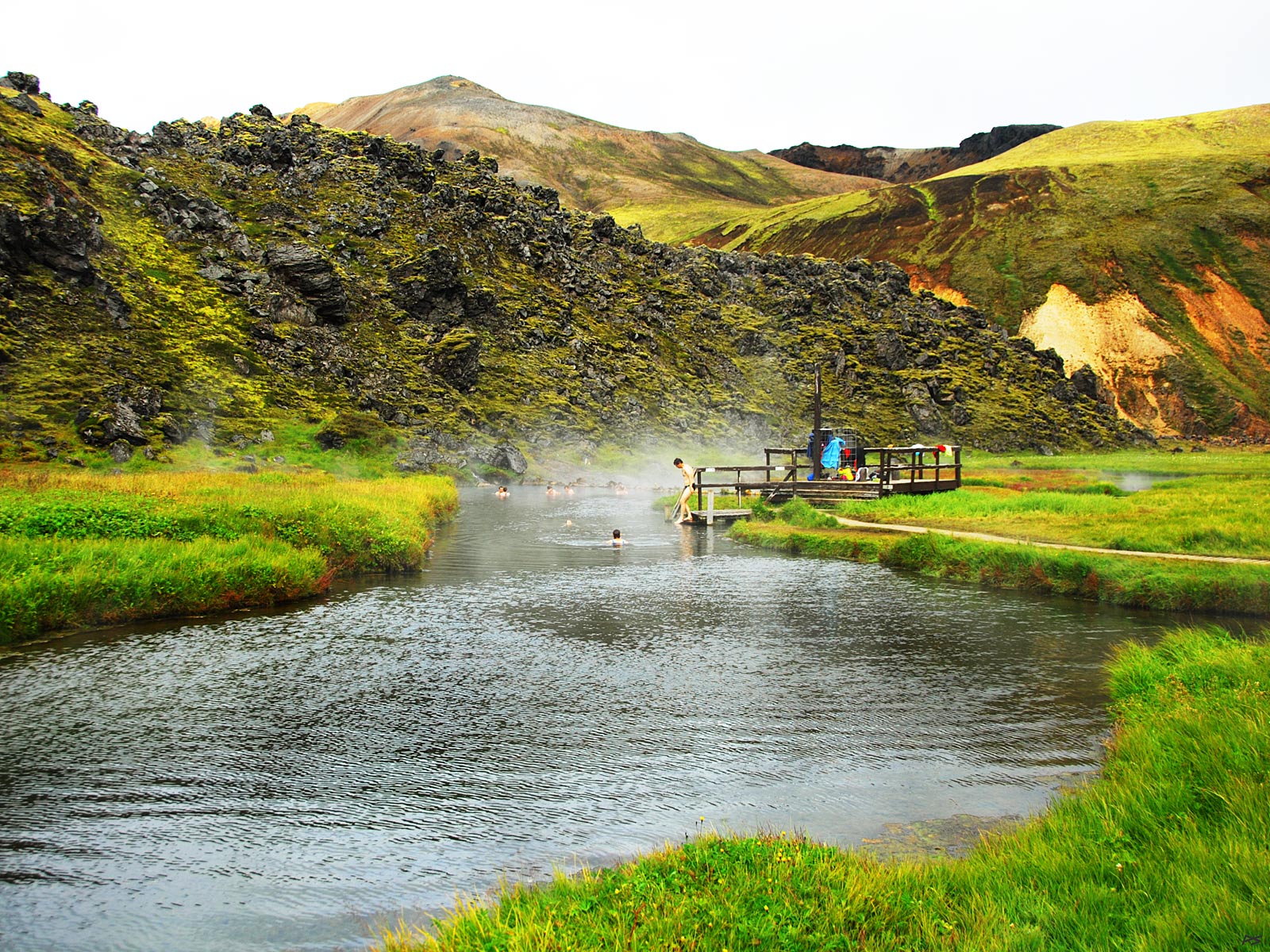
(2013-08-10)
Driving south from Rauneyar (near Þórisvatn) on route 208 (which becomes F208 immediately south of the present destination), you'll find Landmannalaugar after a short detour from the 208/F208. The picture shows a natural warm bath at the Landmannalaugar camp site, a warm and a cold stream combines to give a suitable temperature.

(2013-08-10)
Landmannalaugar camp site with accommodations, toilet and shower facilities, and plenty of space for small tents. The hot bath can be seen behind to the right. This is a popular starting point for hikes to the hills beyond, one of the largest and most colourful geothermal areas in Iceland (Grímsvötn is larger, but that's under the glacier Vatnajökull, roughly one hundred kilometres northeast).
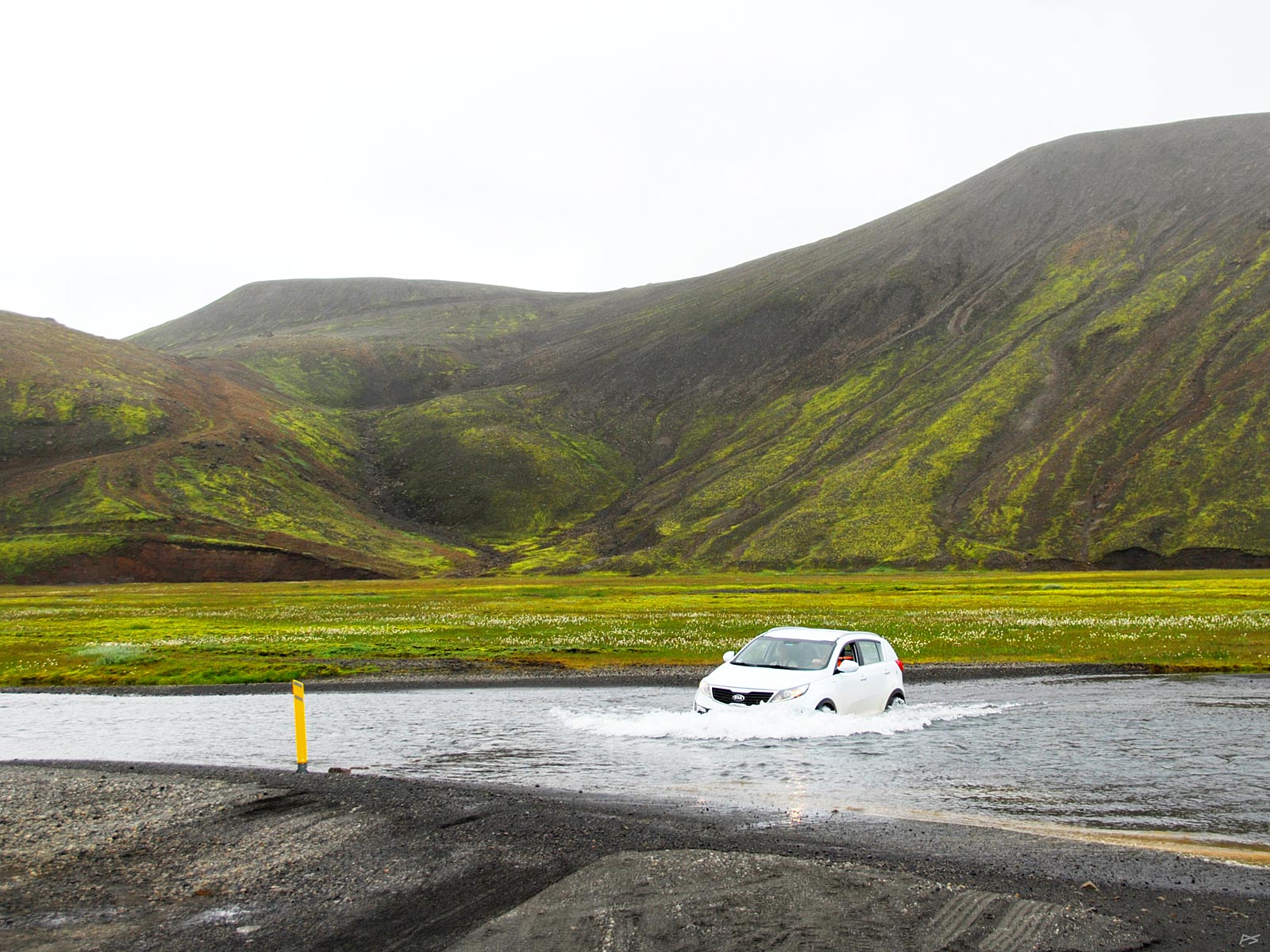
(2013-08-10)
To drive into the Landmannalaugar camp you'll have to ford a lukewarm "river". There is a bridge for pedestrians.
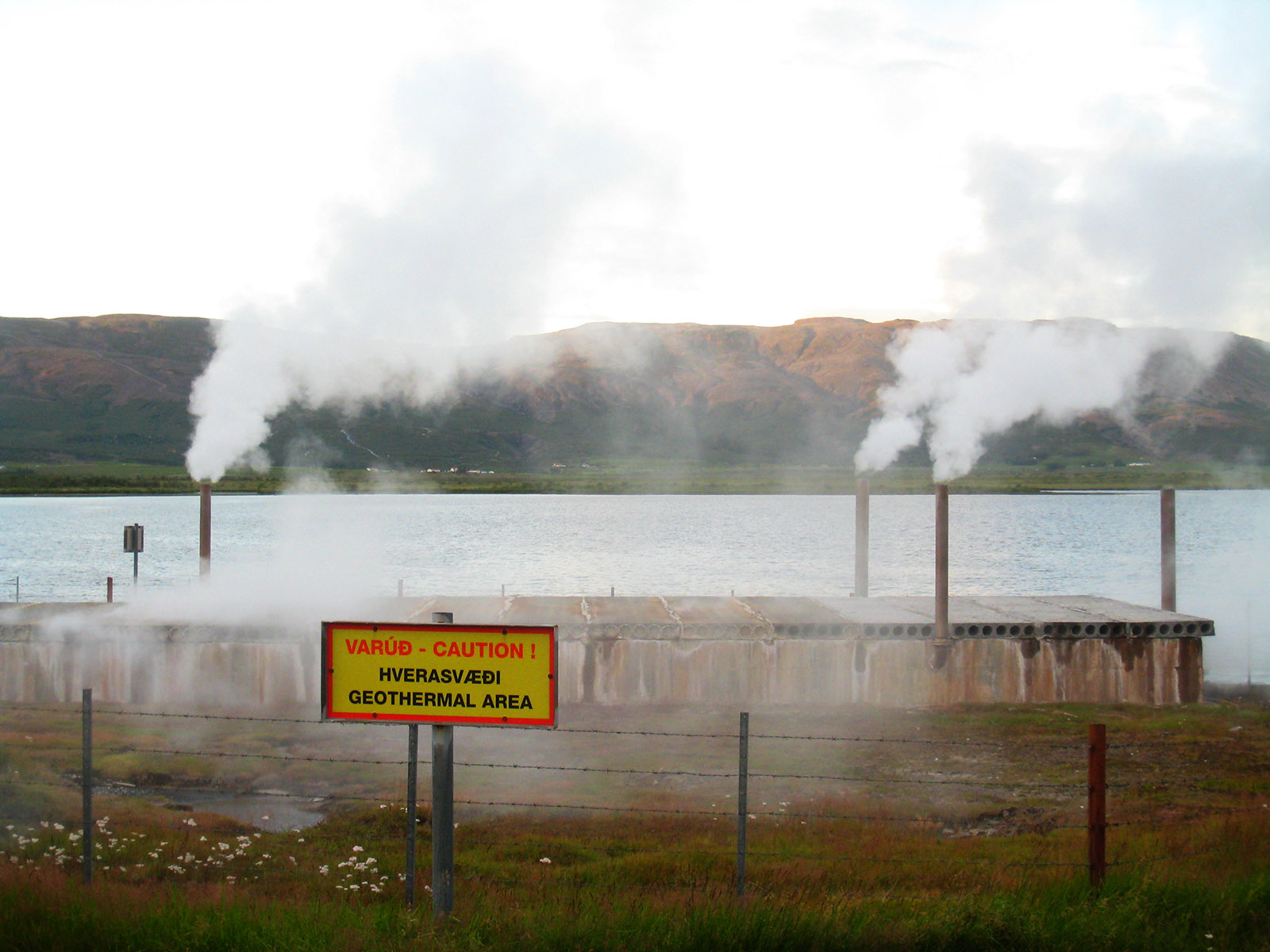
(2013-08-05)
Laugarvatn (=bathing-lake) is both a lake and a village situated between Þingvellir and Stóri Geysir. There is a modern outdoor bath near this harnessed hot spring. The most dangerous area is closed off, but walking on the narrow beach near by, there are numerous places on the water edge where quite hot water is seeping out. On the beach outside the lake side of the enclosure, we saw a man digging out a some kind of packet from the steaming sand. We guessed that he was testing the baking of hverabraud (=hot-spring-bread).
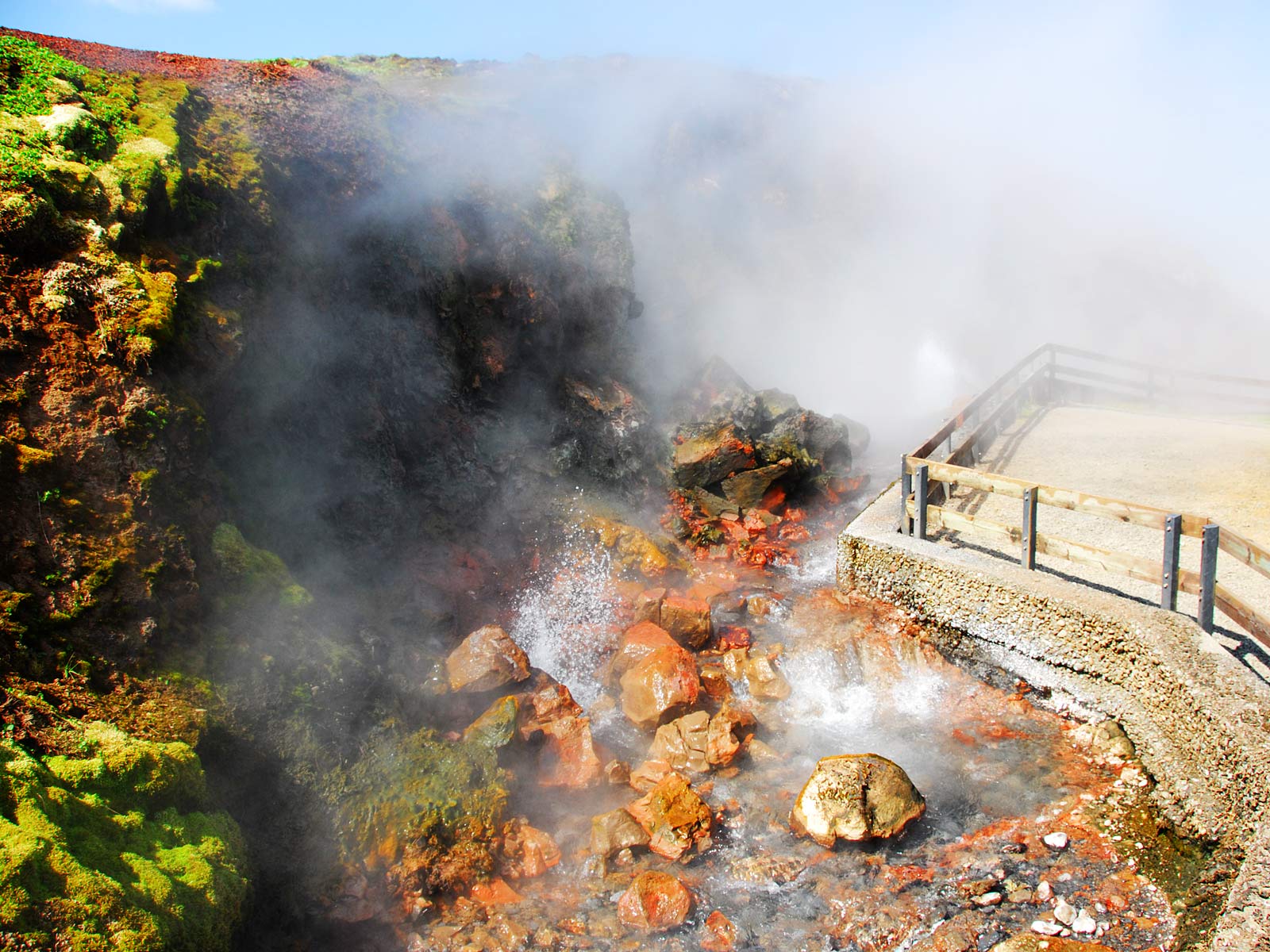
(2010-06-08)
What a tourist can see of the Deildartunguhver (-hver=-hot-spring) in the Reykholt area (northeast of Borgarnes on the west coast). This is the largest thermal spring on the island, yielding 180 litres of boiling water every second. Since 1925 it has been used for heating; there are now pipelines to Akranes and Borgarnes, and to greenhouses in the neighborhood etc. Scientist have found that the hot water from the spring fell as rain a thousand years ago.
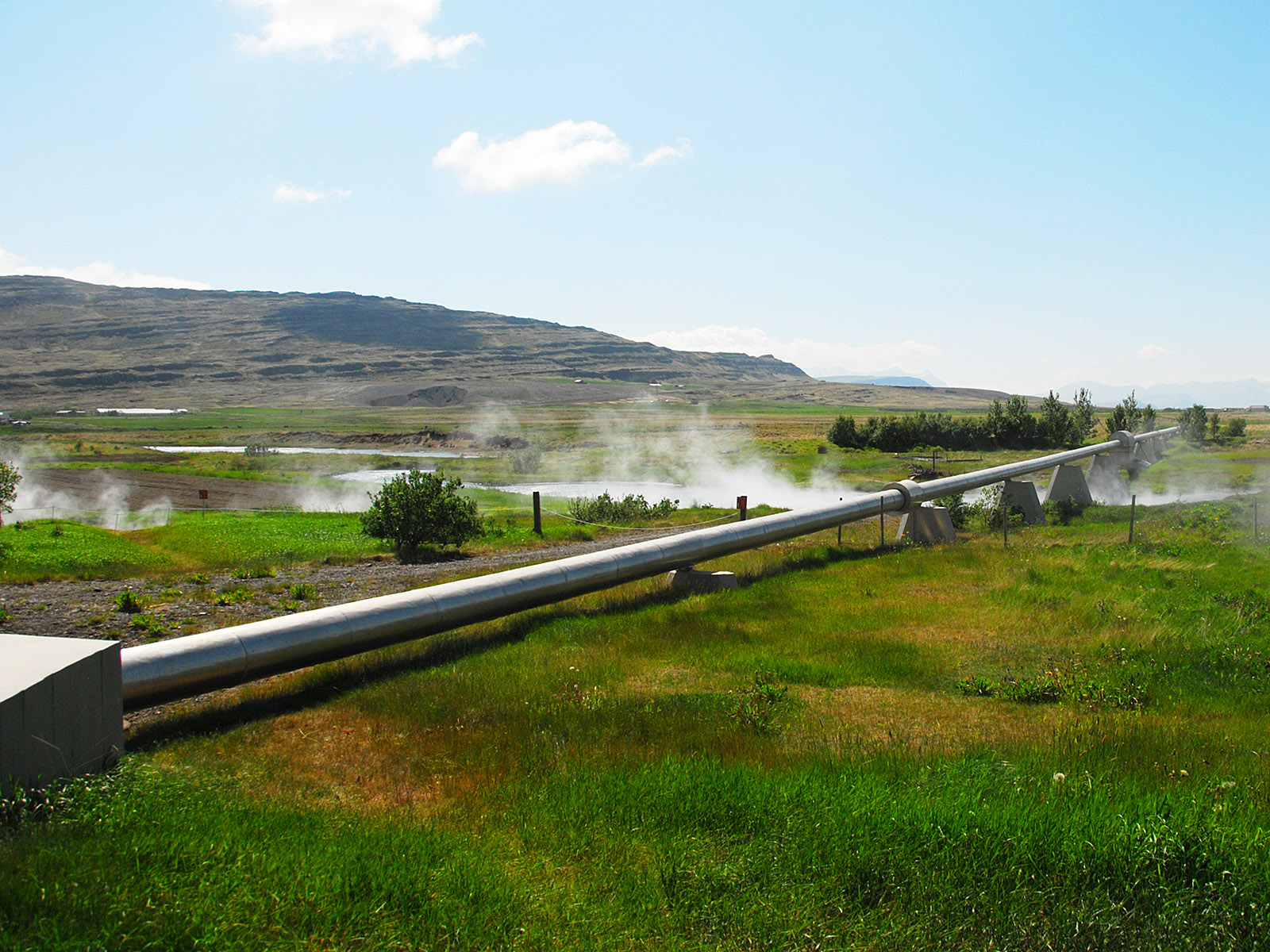
(2010-06-08)
Deildartunguhver continued. Heating by water from thermal springs and boreholes is common in Iceland. In minor towns (as are most towns in Iceland) the hot ground water is fed directly to the hot water taps. There you can wash and shower enjoying a quite noticeable smell of Hell, or more soberly, sulfurous compounds. In the Reykjavik district the hot water in the taps is clean surface water heated by geothermal water.

(2010-06-08)
Deildartunguhver continued. There doesn't seem to be a proper hot bath here, but these greenhouses are very close by.
And not to forget
the unstable gushing hot springs: GEYSERS!
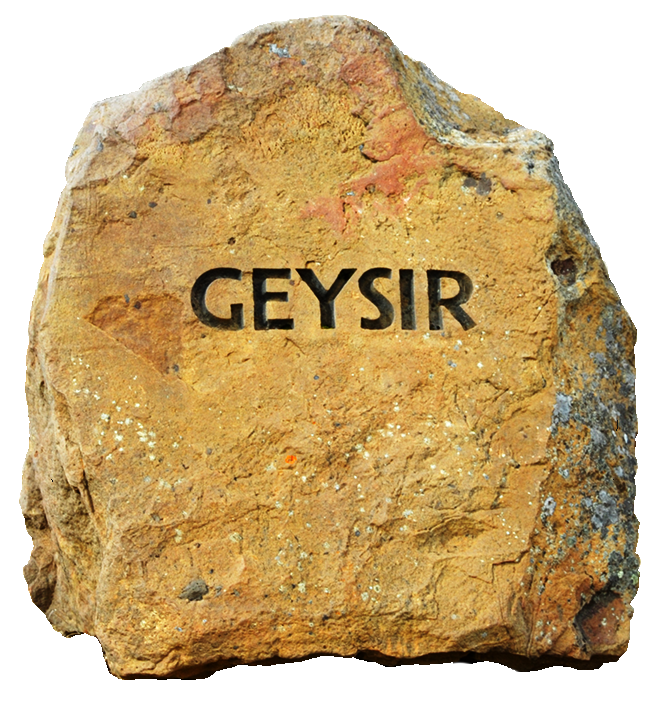
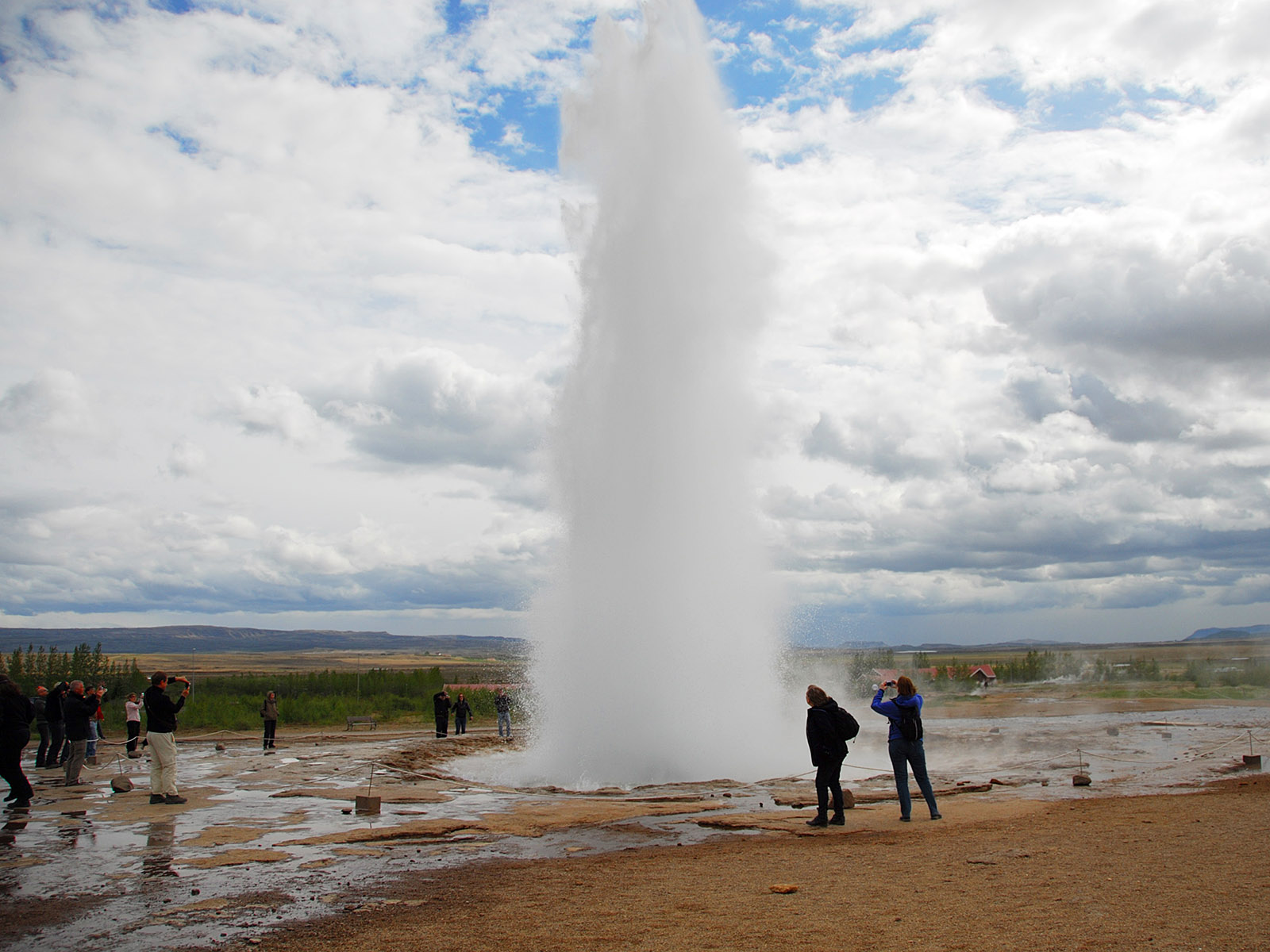
(2010-06-01)
Stóri Geysir (Great Geyser) – that gave them all a name – hasn't been its former self for more than half a century, when tourists through rocks into it to set it off (they say). But its close neighbor Strokkur is reliable, spouting hot water every few minutes as shown. Close by are several small hot springs and vapor vents. This site is found less than 50 km by road east of Þingvallavatn (and just a few kilometres further east, Gullfoss, the third great attraction in the Golden Circle).
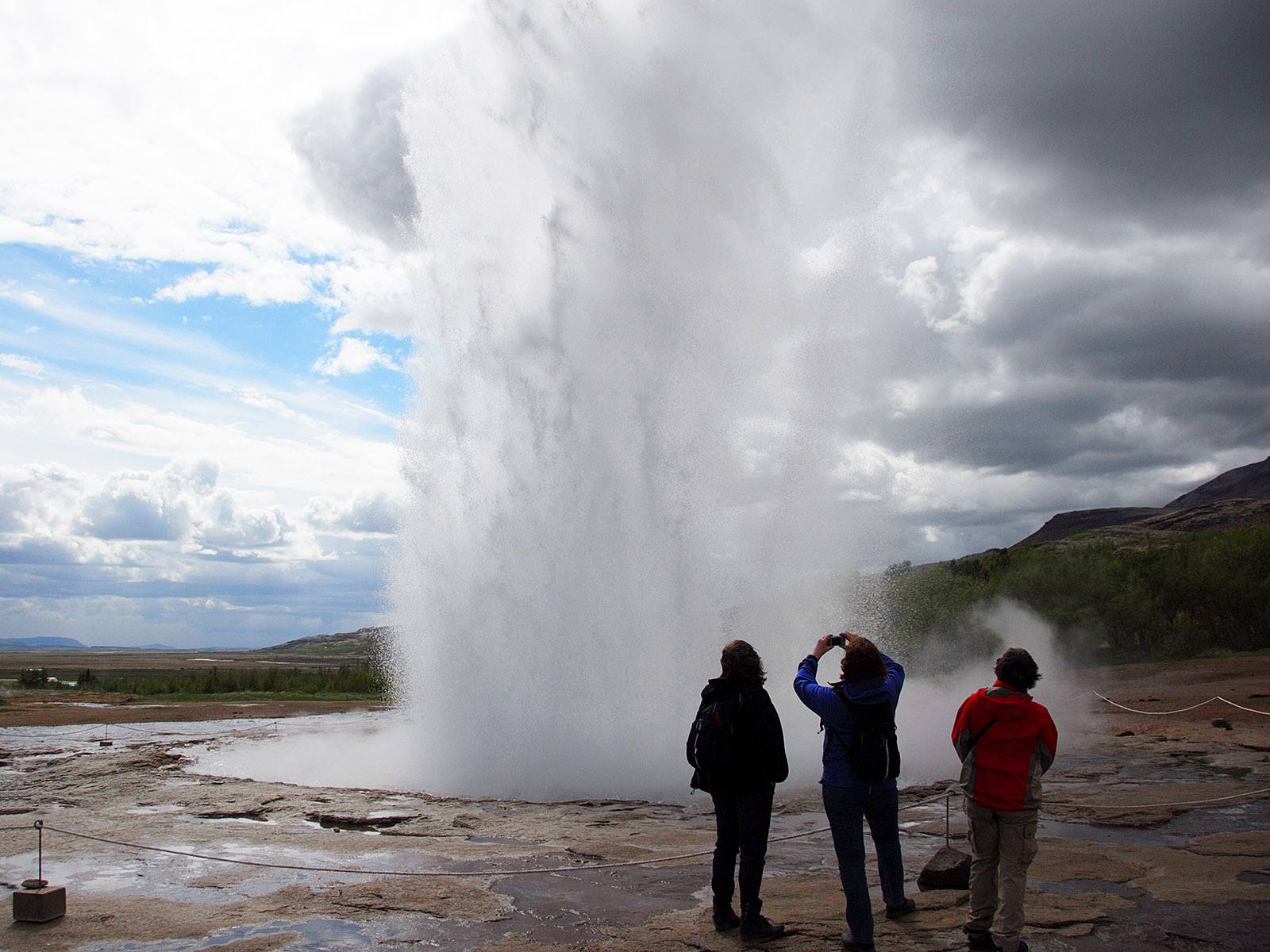
(2010-06-01)
Strokkur – closeup
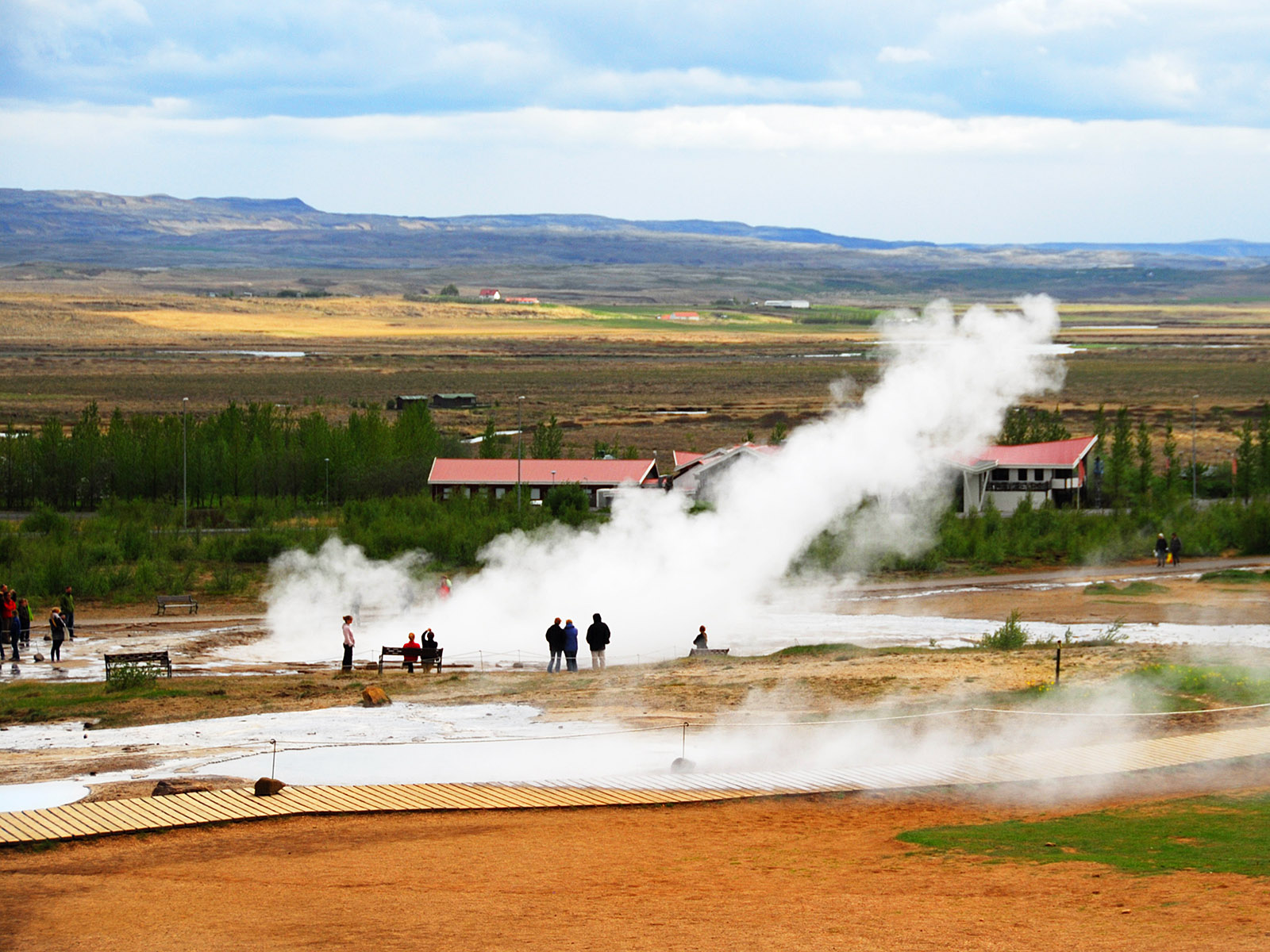
(2010-06-01)
Strokkur – view towards the road
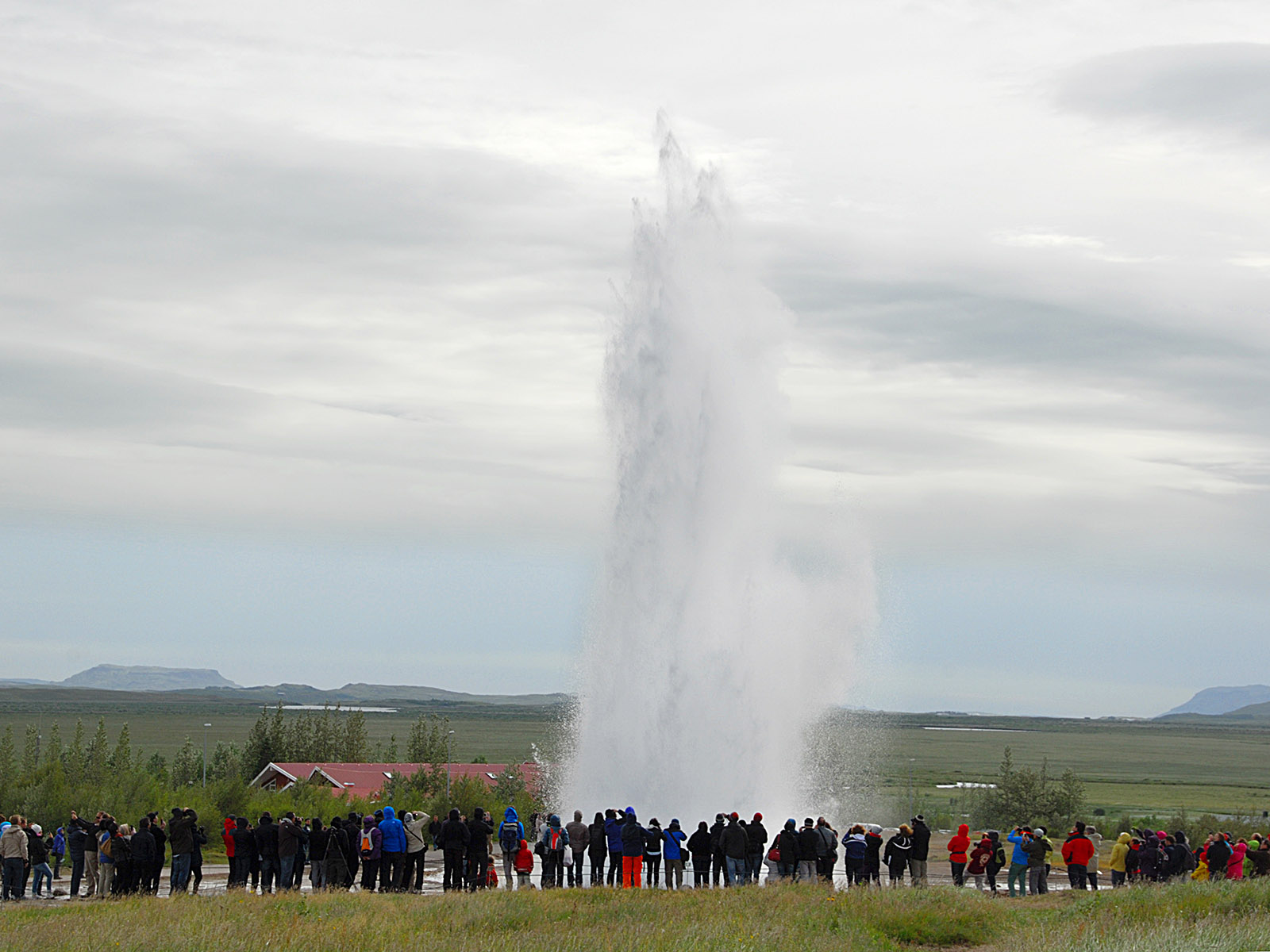
(2013-08-05)
Strokkur – with spectators
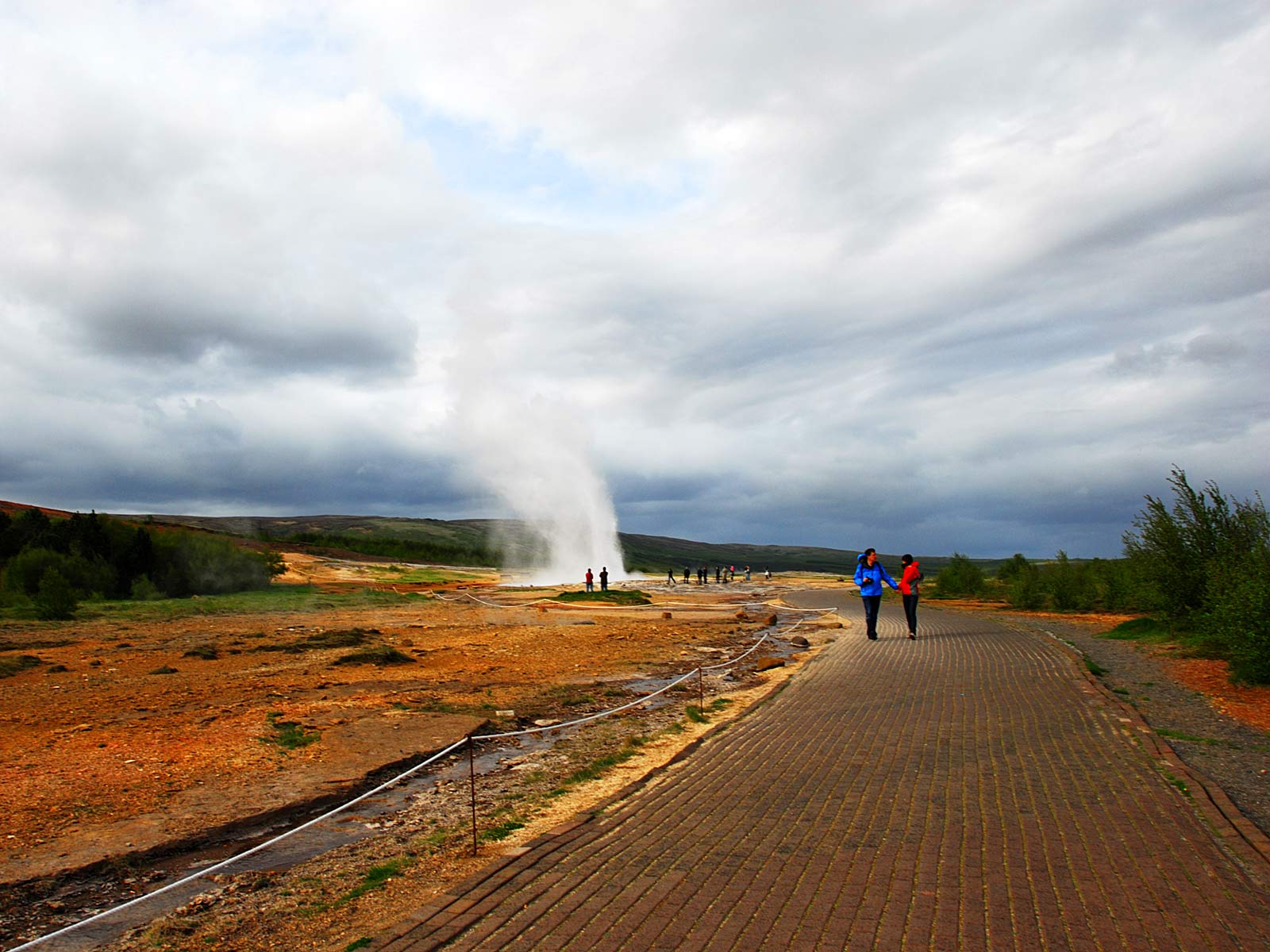
(2010-06-01)
Strokkur – view from the road
Geysers are rare because there are several requirements for them to form. One is that water is seeping down to a dept where it becomes superheated, which here may mean two thousand meters or more. Then a pressure tight channel to the surface must have been formed. This happens through the deposition of a silicate mineral called geyserite. Now please note that water may be superheated (above 100°C) in two ways: (1) Because vapor bubbles cannot be formed without some "help"; a vapour bubble cannot just start from zero diameter, because that would require infinite vapour pressure to overcome the surface tension of the imaginary bubble. (2) The boiling point increases with pressure (about 360°C approaching 2000 meters). The first fact brings an element of surprise into the process (c.f. beware of boiling water in a microwave oven). The second fact means that when bubbles start to rise, pushing some water out at the top, the pressure down there decreases (water replaced by vapour), causing more bubbles to form, pushing more water, causing the pressure to decrease and so on, and like most chain reaction the speed suddenly goes sky-high, as within limits, does the water.
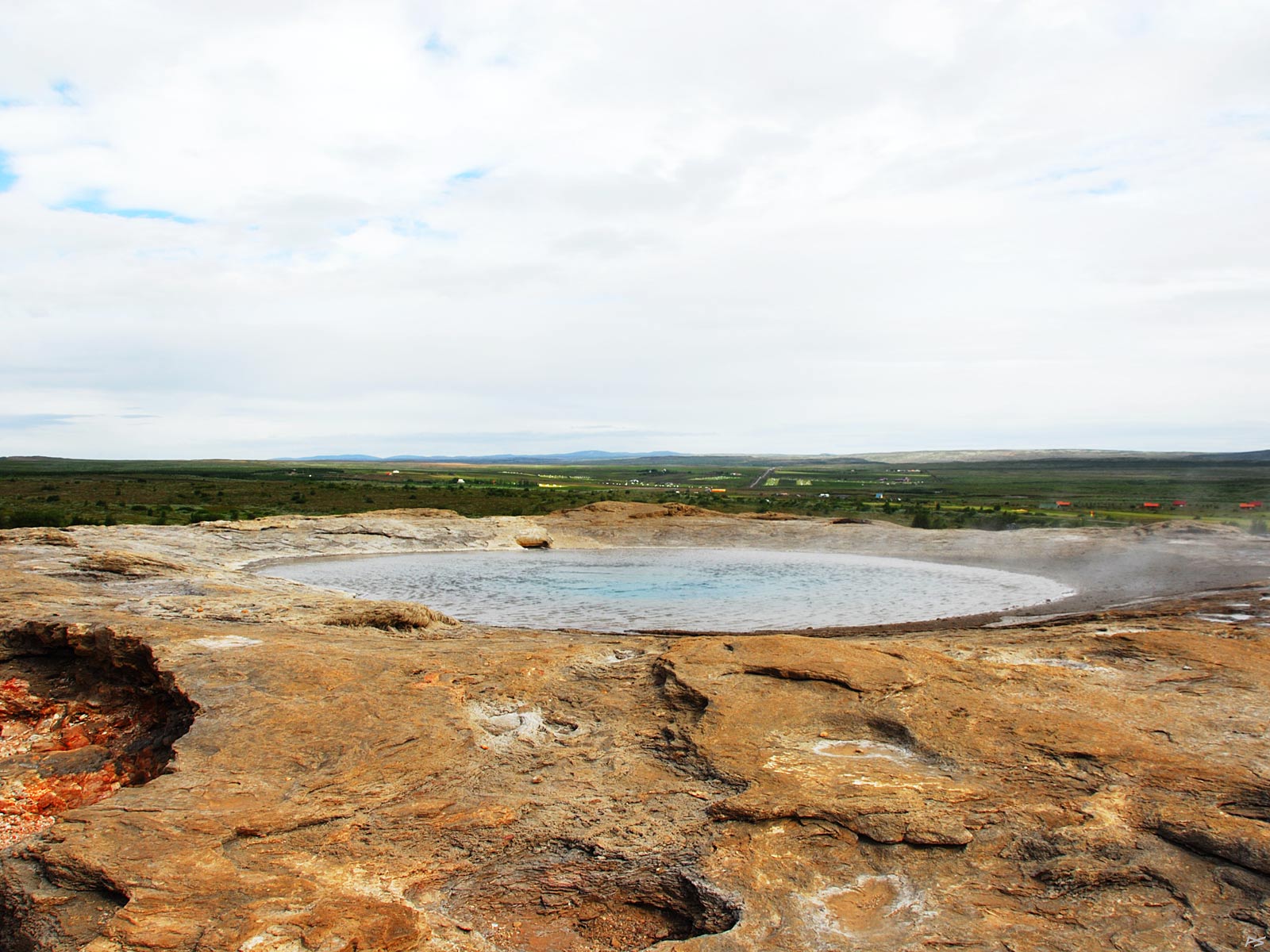
(2013-08-05)
The source of the name of them all, Stóra Geysir. The scientists say that it has been here for ten thousand years, and it was first mentioned in writing in the year 1294. Throughout the years it has been quite variable, like other geysers often changing because of earthquakes, and even because of people throwing things into the opening. It is claimed that the largest hight on record is from 1845, 170 meters (which is by no means a world record). These days it fires something like twice a day, to a height of ten meters at most.
At this point I'm tempted to include an account from a book by John Barrow: 'A Visit to Iceland, By Way of Tronyem, in the "Flower of Yarrow" Yacht, in the Summer of 1834'. The author and his company went to see the geysers, on horseback of course. Here is a part of the narrative:
... The obstinate Geyser, to our continued mortification, still remained tranquil during the whole of this day, with the exception only of two or three occasional ebullitions, of from four to five feet in height, each of which was preceded by the usual rumbling noise below the surface. Towards the evening, however, our attention was called to another quarter of these Phlegnean fields, where a large opening or tube was observed, the margin of which was almost even with the general surface, the small mound and basin being scarcely discernible. We had previously noticed this in a perfectly tranquil state, and doubted whether it was an old worn-out geyser or a new one. We could perceive, at the depth of about twelve or fourteen feet, water in a state of ebullition, but without any apparent intention of rising higher. The circumstance, that now attracted our attention, was that of observing our guides digging up and throwing into the orifice large masses of peat or turf. The guides seemed to think that, by such provocation, they might succeed in bringing on an eruption; and as this was a wished-for event, we all lent our assistance in heaving in turf and peat in large quantities ; and sure enough the boiling fluid, as if filled with rage and indignation at such treatment, burst forth almost instantaneously, and without giving the least notice, with a most violent eruption, heaving up a column of mud and water with fragments of peat, as black as ink, to the height of sixty or seventy feet, and continuing to do so for eight or ten minutes, when it subsided, and all the water sunk into the shaft, where it remained in a tranquil state at its former depth. The masses of turf had been completely shattered to atoms, and dissolved as it were in the water, which did not recover the usual transparency of the geyser waters when it ceased: the fragments of turf in descending fell back into the shaft.
The guides remarked that this was the first time this geyser had played for upwards of a month, the Prince of Denmark [13½ years later to become King Frederick VI of Denmark–Norway (website author's remark)] and his party having choked it, by throwing in a quantity of large stones. In a comparatively small aperture like this, as in the Roaring Geyser, there is little doubt that it may be choked up by heaping in stones, and that steam only will force its way through the water, though this would perhaps be done at the risk of blowing out some fresh orifice. The name given to this geyser by the Icelanders is Strockr, the shaker, or agitator ; and from its position I am inclined to think it must be that which Sir John Stanley has called the New Geyser ...

(2010-06-01)
Tourists on the Geysir site. Did you ever observe strange behaviour of some tourists on major attraction sites?
